It’s been playing on my mind that I so frequently talk about my Leica M7 on here without it really fitting the 35mm compact camera niche subject I originally intended to author this blog around. But after a recent run in with a Leica iiia and subsequently feeling that not including interchangeable lens rangefinders on here was fairly short sighted, I thought about time I put pen to paper – so to speak – and wrote a little something a bit more in depth about the Leica M7; the camera, that if pushed, I would say is probably the best camera I own.
I did write a little about the M7 and how it solved a particular problem for me just after I got it, but to say I have grown rather fond of it even since then would be an understatement to say the least! There are quite a lot of reviews on the Leica M7 online, I particularly like this one on Luminous Landscapes, it just spoke to me as a photographer with a certain set of requirements. But since owning it, it’s become even more clear just how well suited it is to me. And that is largely what I want to talk about, my experiences with it, and how only through its use did I appreciate just how ideal a camera it could be for me… I’ve probably set this up to be some sort of drooling over the top over-positive review? Well it certainly has it’s positive parts, but nothing is perfect the Leica M7 included, and hopefully I can also put across those negative attributes as accurately as I can the positive ones. It is in fact, the negative attributes I’d like to cover first. Mainly as when talking about the Leica M7 there almost seems an elephant in the room. It’s fair to say, the Leica M7, for various reasons divides opinion, and it is this divide where I shall start.
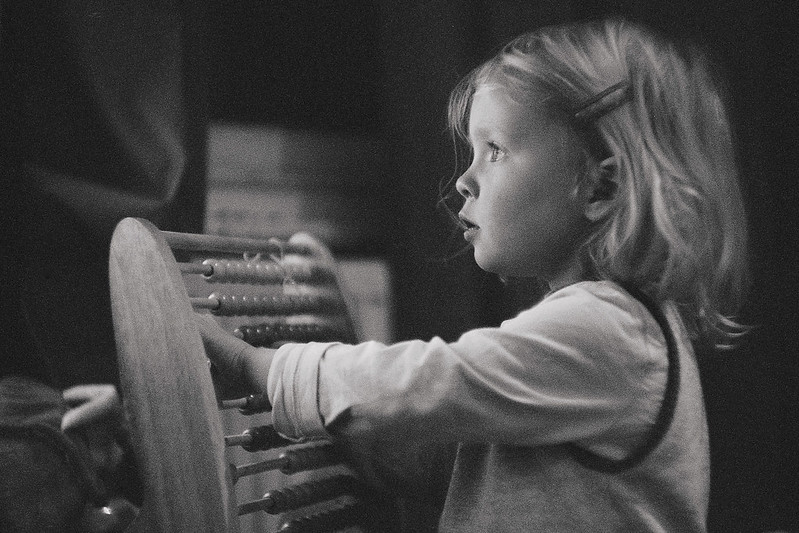
The M7 and it’s divisive nature.
There are many Leica shooters that disregard the Leica M7 for the fact that it has this weird and seemingly alien “aperture priority” mode. And what makes it even more weird, and is possibly even more important, as far as apparent caveats go is the fact that it is also not fully mechanical!
As I banged on about in my last post about Leica and Oskar Barnack, Leica all but started all this 35mm compact camera lark with a fully mechanical camera all those years back. They continued on this path for 70-80 odd years before the M7. They consistently enabled the purist with cameras that continued to provide just enough of a feature set to be little – if anything – more than the minimum that was required. That path of “perfect design” I mentioned as being so apparent in the Leica iiia was fairly well followed and that was despite the competition providing equipment at increasingly lower prices that demonstrated greater and greater technological “advancements”. This was achieved through high mechanical standards so that – all be it at a price – the “purist” could have a camera that not only functioned near perfectly for its purpose but due to its mechanical nigh on perfect manufacture, also felt like reliability was almost entirely a given.
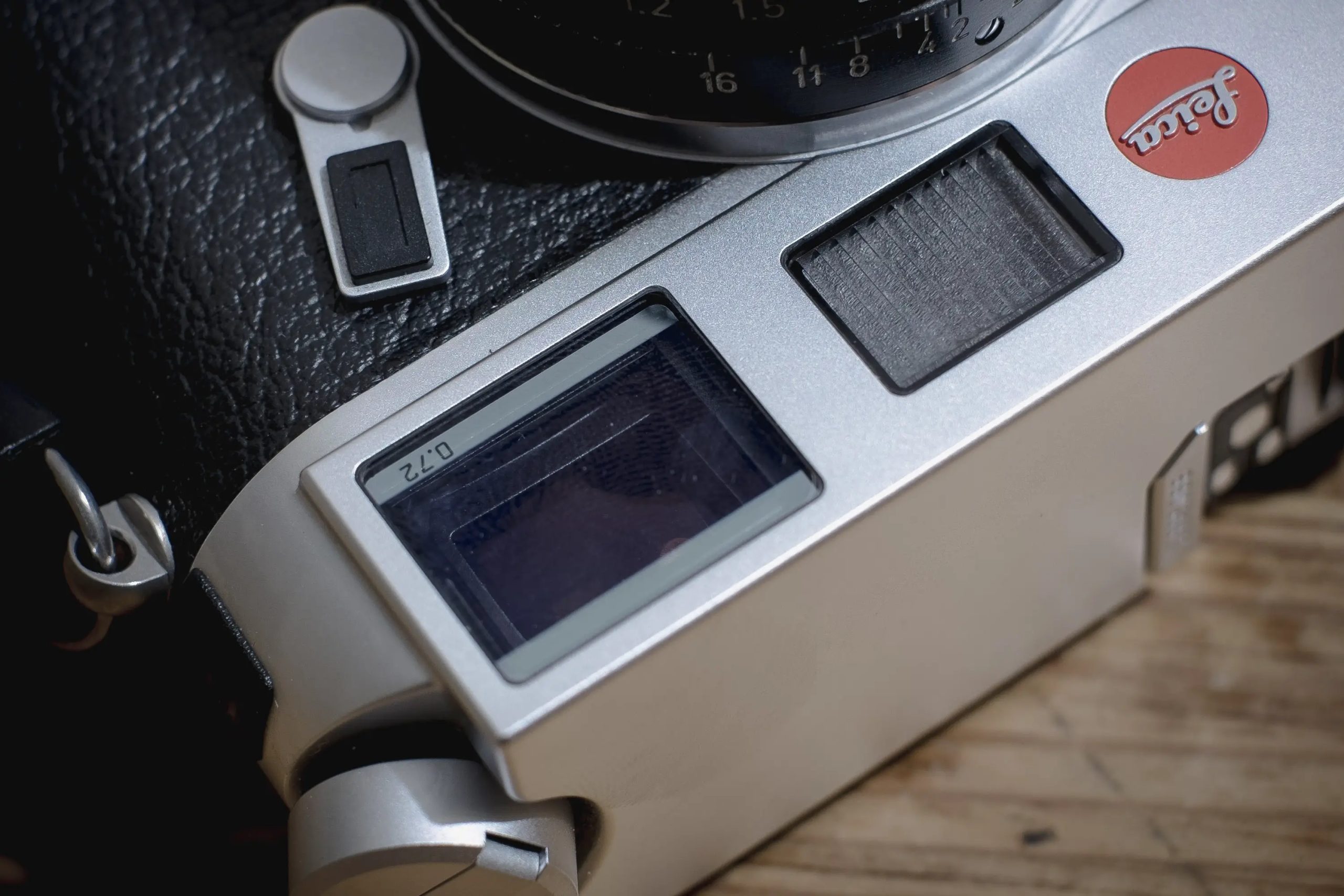
And then the Leica M7 comes along with its fancy electrically controlled shutter. Unlike every Leica rangefinder that preceded it, the shutter of the M7 is electronically triggered and timed. What this brings to the table is the potential for greater shutter speed accuracy, not to mention that when in aperture priority, shutter speeds between the standard stops. Some might argue that this could theoretically lead to more accurate exposure, though due to the reading being from a fairly rudimentary centre weighted meter, it’s probably fair to say that any difference would likely be negligible. I would have also said that if you want shutter speed accuracy, a camera like a Leica should give you that without the need for fancy electronics…
These fairly questionable benefits are combined with what is to many an even more serious caveat. Because it runs off batteries, when the batteries fail you have no shutter! Strictly speaking it will fire mechanically at 1/60 and 1/125 but this is pretty limiting. I guess there is pretty good reason why they couldn’t make it work like the Nikon FM3a and have fully mechanical fall back on the shutter; size maybe… Or cost?! Dead batteries also mean no light meter, so to all intents and purposes the camera becomes a dead weight around your neck. And frustratingly, it also gives little warning as to when the batteries are going to fail; when it happens it just says ‘bc’ (battery check) in the finder and it all but ceases to function.
No wonder it wasn’t received with unanimous approval, it bucked a trend 80 plus years in the making! People don’t like change, and the particular type of people that like change the least are traditionalists and purists. And of course, because of their history these were – and indeed still are – a sizeable portion of Leica’s customers and users. The Leica M7, it seems, to many, was just not what it could or maybe even should have been. Have a read of Bellamy Hunt’s post on selecting the right Leica for you – a excellent and very useful post, but me and him definitely don’t agree about the M7!
N.B. I should add, for the uninitiated Leica’s pre M7 path hasn’t been quite as smooth as I have hinted at. For a good example search google for “Leica M5” and have a read. My rose tinted perspective is to illustrate a point specifically about the M7. But I think that the M5 was also guilty of trying to be a little too far beyond what the purist of the day wanted.
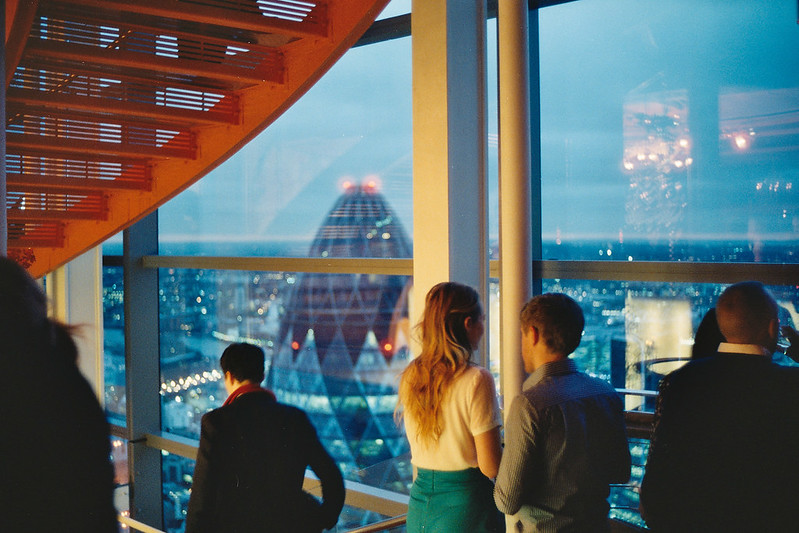
Day to day shooting
To my mind though, much of this is irrelevant day to day. I have mentioned before my fondness for aperture priority on cameras, and specifically this camera. I’ve owned an M6, but as I have also mentioned elsewhere on this blog, I sold it in favour of keeping a Voigtlander R2A. My reasoning at the time was primarily because of its AE function. The M7 might not be fully mechanical, and I might need to keep a spare set of batteries on hand, but for me, those are minor sacrifices that give me a level of functionality that I feel more comfortable having than not, especially on a camera that I might wish to carry pretty much anywhere I go.
Don’t get me wrong, I do get the purist view, I do worry that due to the potential for failing electronics I have a camera that might not live as long as a purely mechanical one. I worry about reports I have read and heard of failing shutters and of course I worry about the potential for repair costs. And finding someone who can do the repair for that matter – Leica probably being the best – or indeed only(?) option.
But these concerns, though valid are not the be all and end all of owning a camera. I don’t have those same worries about other cameras I own, many of which are even more door-stop-like without a battery. And some, like my Nikon D800, which cost me 2 1/2 times more than the Leica (which I bought second hand) I don’t expect to last me more than 5 years. After that time I also expect it to be worth a pittance, which is not the same expectation I have from my Leica M7! This for many though, is not how it is with when it comes to a Leica. I think to these people a Leica should last a lifetime with little question of failure. Because of this, to them, the M7 just doesn’t sit well. It represents too much of a deviation from what a Leica should be. This is not only in terms of what I’ve outlined, but also because it functions with automation, and that for some purists, that is just not right!
Fortunately for me, and I suspect many others this is not the mentality that I hold, for me the Leica M7 represents something else altogether. It represents the point at which the heritage and ideals of Leica of old meets just enough of the modern conveniences of technology to make it the perfect choice. Despite its reliance on batteries and because it does the things I need it to and very little more or less, to me it still encapsulates that feeling of “perfect design”… Well nearly…
The Leica M7 and its design flaws
Before I get to the possibly sickening praise for this camera, I should mention there are one or two features on the Leica M7 that combined with the design and functional choices that surround them just baffle me. The first is the plastic control dial on the back; bluntly, to my mind it’s just a bit shit!
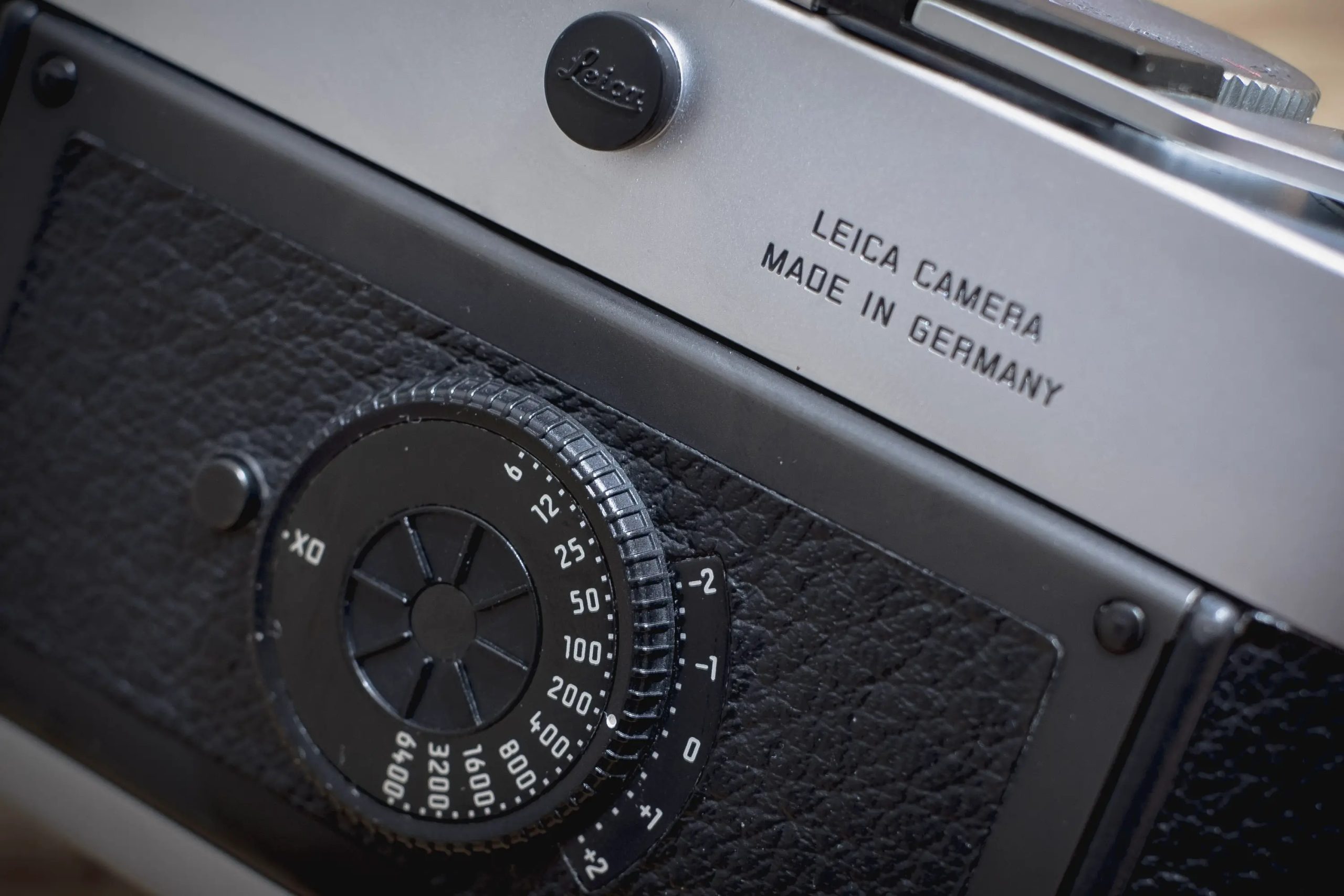
It’s fiddly to use and completely contradicts the rest of the cameras build quality and feel. It basically means I don’t use it for most of what it’s intended. Exposure compensation is far too much of a faff – you need both hands!! – so it only gets used for setting ISO, which, incidentally, is also beyond fiddly. I shouldn’t have to use it for that as the camera has DX code reading, but my view of DX code reading on any camera designed for the enthusiast or pro isn’t positive, and besides the DX code reader in my fails intermittently! So lumbered with the crappy manual ISO dial I stay.
Secondly there is the battery compartment door, also plastic, also a bit shit! It popped off in the street the one day!
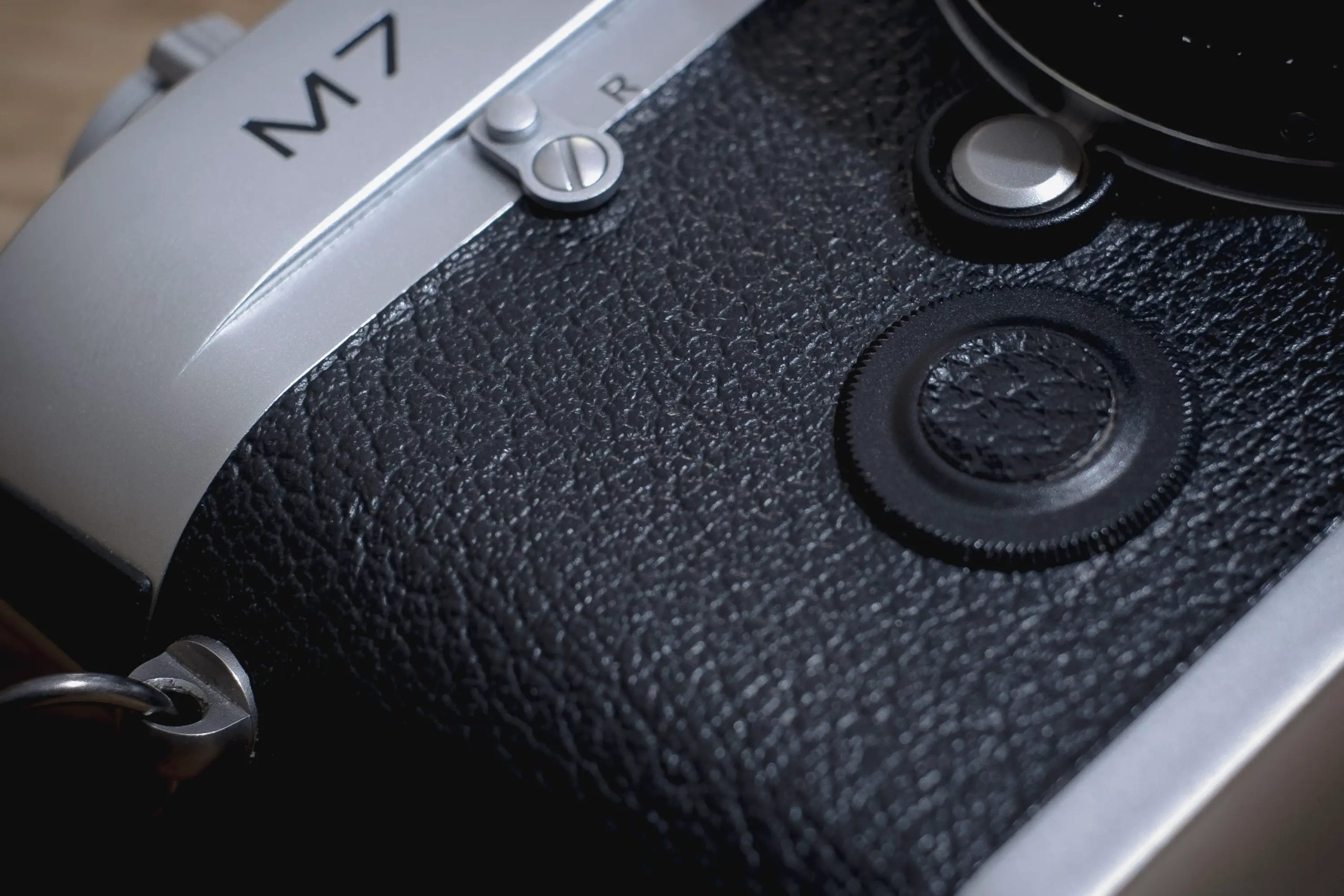
Thankfully I heard it hit the floor, but if that had happened somewhere busy it would have been game over. I’ve stuck a load of blu-tak in it to keep it shut now, but hope to find a more elegant solution at some point. So it’s not perfect… Not quite, but I suppose at least it doesn’t set your hand on fire!
On to the good bits …
I imagine if you have stumbled across this blog only once before it was probably to read an article about a fairly heavily automated camera. I like to take photos with all sorts of cameras, but given the choice, more often than not I choose something with a level of automation, and quite often that results in me picking up a 35mm compact camera. Call me lazy if you will, I probably am by many people’s standards, but in more situations than not I find their limitations and conveniences liberating rather than restrictive.
The Leica M7, due to its manual focus, is possibly a fraction slower to use than some of the cameras I regularly carry. In many ways though it is obviously a lot less restrictive than them too. It provides a more full sense of control, but thanks to the level of automation it does have, it allows for much of the speed of thinking that I revel in when using a fully automated camera.
AE, it’s good!
Some time last year I made the decision to commit to a Leica again, and due to having a lot of the aforementioned automatic cameras I nearly decided to buy an M6 again. In the end I talked myself into selling my Voigtlander R2A to help fund the purchase of a Leica M7. There is a something about the M7 that despite reading quite a bit online I didn’t fully understand when considering it versus other rangefinder cameras. It’s certainly not something I discovered until owning the camera, and had it been more clear, I probably wouldn’t have hesitated for so long! I’m talking about the auto exposure, but more specifically I’m talking about the way autoexposure is implemented.
I mentioned the rudimentary nature of the meter earlier in the post, well fairly rudimentary it might be, but very useful it is. If you read about online you will find people arguing about whether it’s a centre weighted or large spot meter. My personal experience makes me err toward saying it works more like a centre weighted meter. This might not seem logical since the meter reading is taken off a white spot painted on to the shutter blind – a spot that actually has a very defined edge. But in use, the camera doesn’t read like it has a spot meter, readings drift a lot more smoothly between each other, and that is even when metering between higher contrast areas of a scene. I suppose this is probably down to the size of the meter spot, but I wonder if there is light also reflected off the surrounding area? Perhaps not, though I have certainly read of others speculating as such… I’m not technically savvy enough to comment really. One way or another, I find results generally well metered without necessarily having to worry too much in a large range of shooting circumstances.
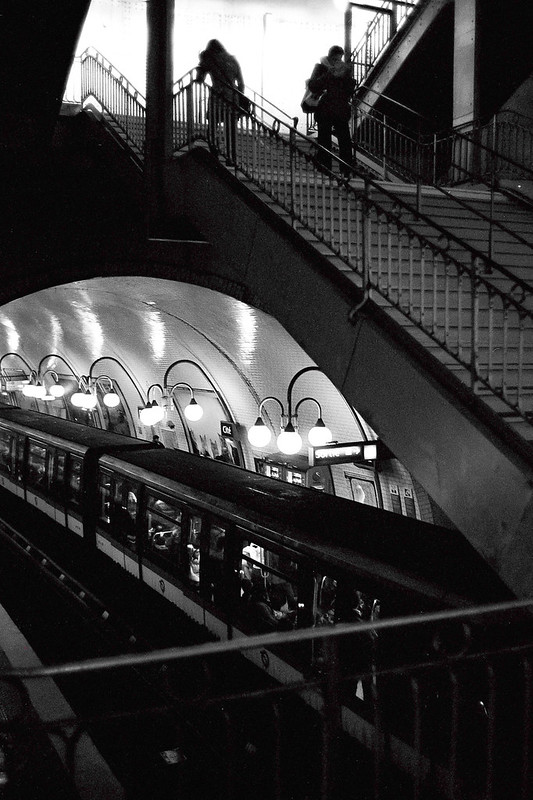
But that’s not the clincher for me. This larger spot, when in aperture priority, is combined with shutter speed readings in the viewfinder. In manual mode, as on the M6TTL, the meter is just shown as two triangles and a circle. This might seem fairly insignificant, but I find these shutter speed readings very useful. As I said, the Leica M7 is good at giving the correct exposure with little thought. But it’s by no means flawless, you can’t just point it at any scene and expect it to get it right. It’s not a multi-segment or “matrix” – as Nikon would call it – meter so it doesn’t meter or try and understand the whole scene itself. Not that matrix meters always get it right either – they are just designed to at least attempt to do so, which is very much not the case with the M7.
Despite this, when there is a difficult scene to meter I find the way the M7 meter works is one of the easiest I have used for assessing for good exposure in the way I feel most comfortable. This is not because it tries to be too clever, but actually because of how simple it is. I know some people like to get all enthusiastic about the zone system and spot meter to the nth degree, but I’m not into getting all that enthusiastic all that often – I believe I have mentioned my laziness before?! What I’m into is being able to quickly and relatively accurately get a feel for a scene. Because the Leica’s meter is more weighted than a spot, I find it useful for gathering a set of quick averages from around the scene. From those quick averages I can then make an informed decision at what will give the best overall exposure for what I am trying to achieve. Having assessed the scene I can make a judgement about what shutter speed I want to use, but rather than having to switch the shutter speed dial manually, I can find an area of the scene that gives me the speed I want to use, half press the shutter to lock the speed in, reframe and take the shot.
With the M6 (/M7 in manual) you can do this by taking readings from around the scene but it’s a slower process and because there is no shutter speed reading in the viewfinder you have to look at the top of the camera to take each reading. This process is then repeated until you have your desired combined reading. Then once you have that, it has to be dialled in, then eventually you can shoot. I remember doing just this in Worcester cathedral the one day some years back. I was trying to work out the best exposure for a half candle lit scene, it took a little time, but I got it right in the end.
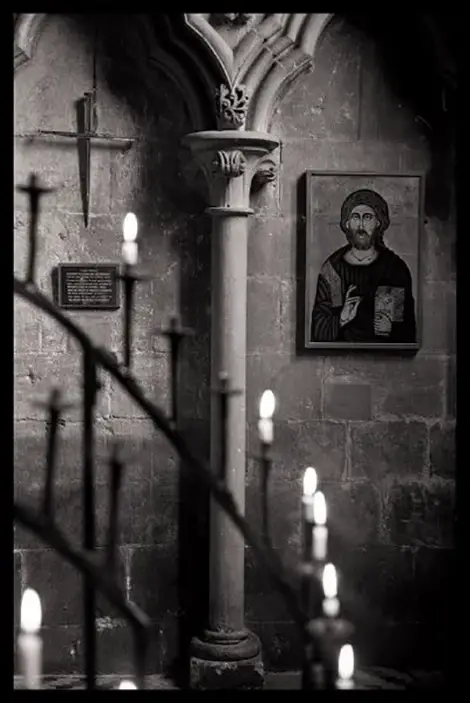
It’s very doable, but it’s just a slower process… That’s not to say it isn’t a process some might revel in, but I personally like a little more speed. I suppose I’m drifting toward extolling the virtues of auto exposure as a whole here, and that not my point. The point is, due to the way autoexposure works in the Leica M7 it arguably allows a better understanding of a scene quicker than its non AE equivalents. And of course, if you still want to shoot it like an M6, you can switch it to manual and fill your boots!
Comparing AE to AE
Just quickly back to what I was saying about owning the Voigtlander R2A and the time I was mulling over getting an M6 rather than an M7. The mentality I had then was one of already owning an AE rangefinder, I nearly talked myself into the idea that an M7 was a needlessly expensive option when I could have an M6 and Voigtlander for the same money, have the same features and have two bodies. It made so much sense at the time, and in many ways it still does. But, it all comes back to the way the M7 meters.
The Voigtlander meter is biased toward one of the corners, bottom left I think. Although this does have merits in its own right, it isn’t as useful in as many situations I don’t think. This isn’t to say I ever had much trouble with exposure on the R2A, but what the Leica M7 has brought to the table is something a whole lot more for the way I am most comfortable shooting. I think the same can be said of the Zeiss ZM Ikon… Though since I haven’t used the Zeiss I shouldn’t really comment, but I am lead to believe it has the same metering pattern as the Voigtlander (edit, I am actually now trying one out, and I’m not quite right here, but I will explain all when I finish the Ikon review).
These aren’t the only cameras the Leica M7 measures favourably against in this respect either. Take the Nikon range of manual focus SLR cameras. The FM’s have LED metering readouts like the M6, you can see the readout in lower light, but they don’t have the advantages I’ve been talking about in the same way the M6 and it’s simple LED meter doesn’t. The FE’s and FM3A have some of the advantages through the well implemented use of matched needle meters, you just can’t see the readings quite as easily in lower light. The F3 has as digital readout, but relies on a crappy little light to illuminate the screen… I could go on for ages! For me though, for my requirements, the way in which the Leica M7 meters, and performs it’s AE function are absolutely ideal! In fact, I would go as far to say that, with the M7 in my hand I feel more confident about my ability to shoot a photo with the exposure I was aiming for than I do with any other camera I have shot with to date.
Further thoughts on the level of automation in the Leica M7
I read a lot about cameras online, and I find a lot of commentary on automation. More specifically where automation is looked upon as cheating to some degree. Whilst I wouldn’t ever invalidate any method of photography to the extent of calling it cheating, I do see some truth in the idea that over simplification of function in the wrong hands can lead to laziness. In the case of the Leica M7, the level of automation is not – in my view at least – there to encourage or aid a point & shoot mentality. It is there to give the user a very valid method for ascertaining correct exposure. This is in fact where I found myself completely agreeing with matey on luminous landscapes. A completely manual camera can hinder the process of photography, especially within certain fields. The M7 does its best to get out of the way of the the photographer, it allows for quick decisions and fast action without patronising the user or overriding the his or hers actions with over simplification or over dumbing down of function.
There is also a fringe benefit of this AE function in the Leica M7. In the way I use the camera, it makes the crappy exposure compensation dial pretty much redundant!
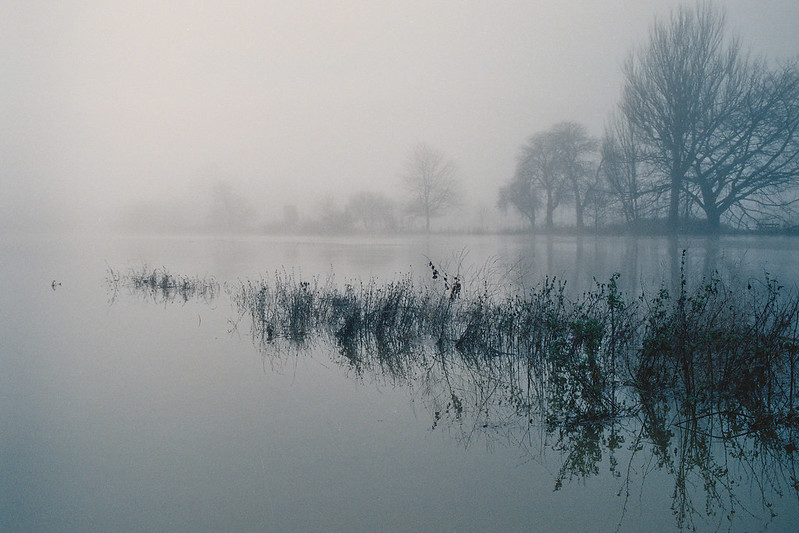
A quick word on the Leica M7 in the hand
There is one other fairly major reason for which I place the Leica M7 on a bit of a pedestal. This is admittedly only based on what might have been (but certainly didn’t look like) a dog of an M6, but this M7 is by comparison very smooth. I remember thinking how nice the M6 was to use, but the M7 feels smoother to me. It’s especially noticeable in the film advance lever, it’s like a knife through butter! The shutter speed selection also feels perfect, in fact all the controls (ignoring plastic abomination on the back) feel perfect! There is only one other camera in my collection that equals the feel of quality the M7 has, and that’s the Leica iiia, but even that doesn’t feel quite as smooth in its mechanical function… I guess this stuff almost goes without saying though.
Pride of ownership
So, enough about the camera itself, it’s just a tool after all… isn’t it? To me a camera is a tool, but since when does a tool only have to be about it’s function? This is the second post I have written where I have talked about the history of the Leica, I won’t go over the details again, but taking all that into account, how can I not be proud to own such a thing? I do think some people mistake pride in cameras, or at least the mention of it, as their owners using them for bragging rights. That might be the case for some, but pride in ownership of a camera is not about that for everyone.
I love owning such a beautiful luxury camera. And that is, its fair to say, a portion of what a Leica is – a luxury object. But this is not for the benefit of showing off, it is for the benefit of personal enjoyment. It cost me a shit pile of cash, especially when including the cost of the lenses. I could have taken my family on holiday probably twice over for what this cost me, but instead I selfishly spent the money on myself. How can I not respect it, appreciate it, and take pride in owning it when taking all that into account.
Having that pride, respect and appreciation for it has to be a positive thing. I respect it as a thing, but I also respect it in use. Due to this fact I have taken the time to really get to know the camera in a way I’m not sure I have with many others. As soon as I got the 35mm Summicron for it, it felt complete, it felt like something that shouldn’t ever stop me from achieving my best. Some might find this daft, but I didn’t want to let it down! The first film I took with it I got this shot, a photo that I hope most would agree has at least some merit?
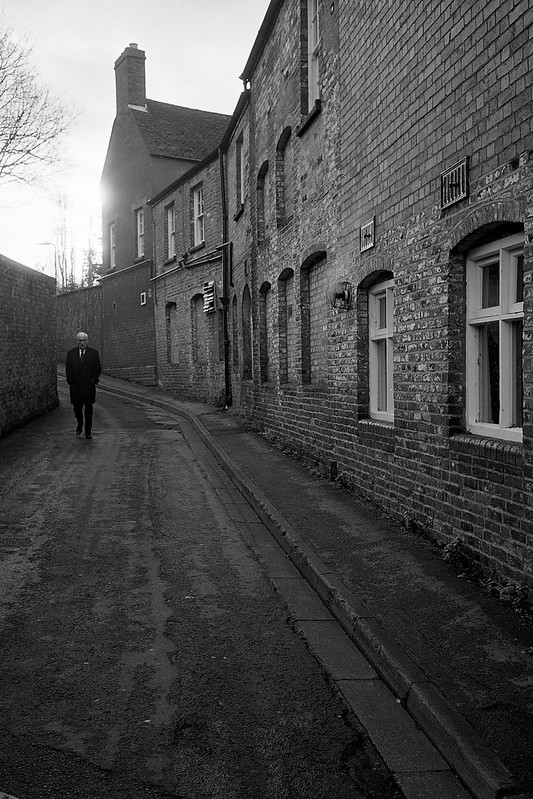
I am very pleased with it anyway, not just because I like it as a photo, but also for the fact that I’ve been trying to get a photo I like of this bit of road for years! I’ve always felt it has merit but not as an empty road. First film with the Summicron and this guy appears just at the right time. I managed to get the shot, despite my near panic at the possibility of missing the moment. I was very pleased I was successful, but moreover the fact it happened with this new complete feeling setup sealed the deal for the camera and my emotional response to it!
So conclude my Leica M7 review.
The Leica M7 fills a hole in my requirements where I want to shoot something a little less restrictive than many of the fully automatic cameras I often use, but without the addition of stacks of superfluous features. It manages to do this without adding serious bulk or weight and it rarely gets in my way or feels uncomfortable to carry. On the days where I manage to convince myself I only need the 35mm Summicron, it hangs, strap across my chest ready to shoot, but without feeling like it’s there. To this end, despite it being on the large side compared to (for eg) the Ricoh GR1v it succeeds as being a 35mm compact camera in much the same way many other, much smaller cameras I carry do.
As I have mentioned in my posts about the GR1v, I feel it partners that camera perfectly for my needs. Yes I worry about it failing, but I remain pragmatic by remembering that I don’t have the same concerns or worries day to day about any of my other cameras. If it fails, it fails, I will have it fixed, because I can’t to any real extent fault it as a tool! And beyond its status as a tool I see it as so much more; to the point that it’s affected my shooting mentality through using it.
Though it’s not a view shared by all, I really do think the Leica M7 maintains that feeling of perfect design inherited through its forefathers. Admittedly there are a couple of thing that leave you scratching your head about what the designer was thinking, but the way the autoexposure and light meter function wholly make up for these. The meter itself is about as simple as it could possibly be, no unnecessary computer making any decisions behind the scene, it’s just a simple meter that gives a simple reading. In the right hands though, combined with the well thought out autoexposure implementation, it’s nigh on faultless. It gives me a sense of confidence in my ability to choose correct exposure that I’m not sure I have had with any other camera. It could be argued that I have just got to understand how to use the camera better than any other, but if that has happened through the huge pride I have in owning it then so be it.
Ultimately, I feel I have bought something of unquestionable importance in my path as a photographer and whilst some might not find the same love for the Leica M7, for me I feel it is quite possibly the closest thing I have to the perfect camera!
Cheers for reading!
Hamish
Plenty more shots can be found on my flickr here
Leica M7 review and thoughts – Luminous Landscapes
Share this post:
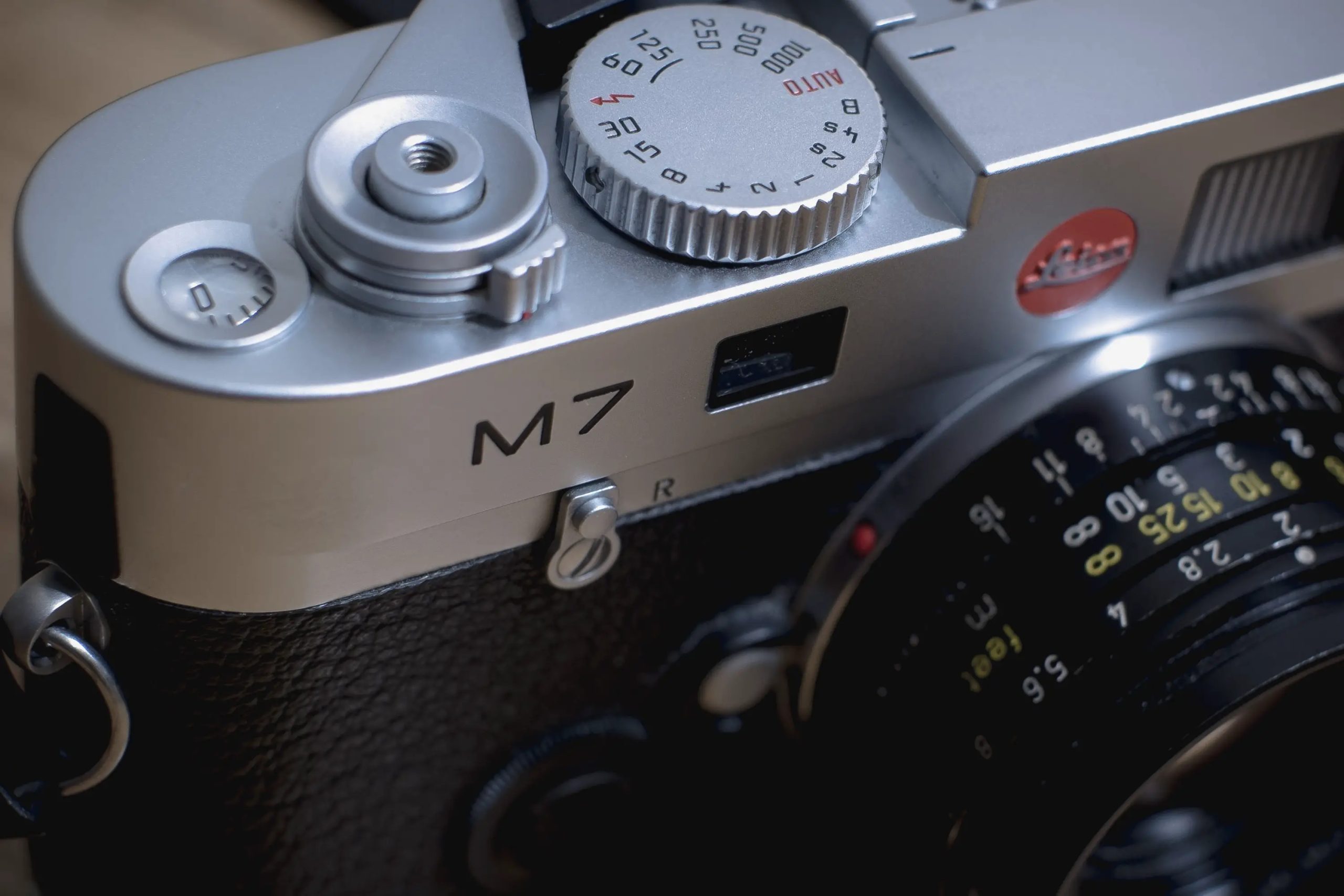








Comments
Tony on Leica M7 review – a near perfect camera (at least for my personal requirements)
Comment posted: 13/04/2014
The M5, in many ways, is actually more advanced and useable than the M7; a true spot meter, ratcheted film rewind, match needle readout and shutter speeds constantly indicated in the finder, a shutter dial that can be adjusted without bringing the camera away from the eye.
The fact the M6 is the go-to metered Leica over either of these has always confused me.
Comment posted: 13/04/2014
Comment posted: 13/04/2014
Comment posted: 13/04/2014
The Leica M7 | Camera Equipment | Scoop.it on Leica M7 review – a near perfect camera (at least for my personal requirements)
Comment posted: 19/05/2014
John Ferebee on Leica M7 review – a near perfect camera (at least for my personal requirements)
Comment posted: 29/07/2014
In good part because of your two posts, a nice used M7 arrived today. Yes, I sold the M6 after using it for 10 days in France. It was my black and white camera on several cloudy and rainy days teaming up with the M9 when the weather was better. Having a digital and film camera using the same lenes is so much fun. I only wish I had gotten the M7 before I went but I was concerned about leaning on the fly in a place that I may never get to visit again. However, I missed some shots because of the all manual 6 which was the final decision maker for me.
Tomorrow it get's used by me for the first time and it will be fun learning the metering etc. Perhaps, as time allows, you could post a few M7 user tips. I'm lazy too so they could help me not learn everything the hard way -:)
Comment posted: 29/07/2014
John Ferebee on Leica M7 review – a near perfect camera (at least for my personal requirements)
Comment posted: 31/07/2014
Paris was great fun. Wife and I saw all the well known tourist attractions and a few other places as well. Normandy was very special. We had a guide who was a history teacher and knew a lot about D Day. The American cemetery left me speechless and in tears.
I have started to post the digital photos on my blog and will continue to do so as I sort through them. I sent the film out for processing as I didn't have the time and didn't want to mess them up.
I tried to see France and well as photograph it but still took a lot of shots.
http://johnferebeephotography.wordpress.com/
I'll send a M7 note from time to time.
Comment posted: 31/07/2014
lux on Leica M7 review – a near perfect camera (at least for my personal requirements)
Comment posted: 04/05/2015
The only, real design flaw that went against the "philosophy" (an ambiguous word but is understandable) is, when you turn on the camera, it takes roughly 2 seconds to display the current ISO setting in the finder, and during that 2 seconds all functions including the shutter are locked up. I put the camera in my pack with a wrap to let it bump around so I need the shutter lock on to prevent the camera from accidentally being fired, but I would like the camera to be ready as I ready myself for the coming moment. I love the AE function for that exact reason, I've even learnt the FoV of my preferred focal lengths throughout the years so that I don't waste no time framing with the viewfinder, and - after I draw it I need to wait the damned display to disappear while watching that moment flees away.
Not a single camera out of the hundreds I have used does this, except the ones that need to extend their lenses maybe - but that's another story and can be lived with.
It's obvious how it ended up like this. In 2001, perhaps during the final stages of the camera's development, Leica engineers suddenly realized: although it's been around for 19 years already - for the first time in history, not before and never after, the DX coding system found its way into a M body. They had developed a sophisticated optical device that uses infrared beam to read the code (how it turned out in reality is worth another thousand words), but not until the last moment did they understand the side effect - you have no idea what the current ISO with if you set the dial to DX!
It was after the 90's, Japanese disposable cameras everywhere, so the Germans turned to their wive's lowly fully automatic Point & Shoot for hint. There they found the solution, as simple and elegant it could be - the tiny transparent window opening on the camera back!
But they couldn't. They couldn't do that to the M7, not anyone, not even Barnack himself. The Leica form factor is sacred. Good lord the only freedom they were allowed was the ISO dial, where the compensation mechanism was to be added. And some of them might still remember how hard they had to fought during the M6's design to have that battery cap added to the front panel (because they can't put it on the bottom like the Japanese , for the same reason). No opening. Not another. Not again. Plus that the window might be plastic, which must be avoided at all cost.
So what we see in the M7 today is very likely result of a Plan B. Moreover, letting engineers run the product design, without a unified vision. The same thing that killed Zeiss Ikon several decades ago.
Still I own two M7s as work cameras, I just don't carry them daily. Plus that they are heavy. And I must always refrain myself from the Cosina Zeiss Ikon, not only because its huge finder, but also its power switch...
Comment posted: 04/05/2015
Dan Castelli on Leica M7 review – a near perfect camera (at least for my personal requirements)
Comment posted: 05/10/2016
A reply to an older post. This review popped up when I was reading the excellent review of the CL.
Just a couple of points on the M7:
1. I was planning an overseas trip and was worried that if I lost the blasted battery cover, I'd be stuck w/an expensive piece of modern art. I contacted Leica USA, and asked for a spare battery cover. They sent one out at no charge...it's tucked away in a small accessory sack I pack.
2. If the batteries fail, you're stuck w/manual speeds of 1/60 or 1/125. I carry a roll of FP-4. If I have failure, I can keep shooting until I can replace the batteries. I also carry an exposure chart on a piece of index card. I just worked out the 'sunny 16' rule using the ISO 125 film.
3. I was getting wonky exposures, incorrect ISO settings and short battery life. A repair performed by Leica USA upgraded the electronics, installed the optical DX coding, and fixed the battery drain issue. They also did overall adjustment/CLA. It wasn't cheap: $400 USD back in 2015. My M7 was purchased used back in 2011 (in top shelf condition) & I keep equipment for a long time, so the work was worth it.
Comment posted: 05/10/2016
Comment posted: 05/10/2016
Comment posted: 05/10/2016
Martin Hugh Henley on Leica M7 review – a near perfect camera (at least for my personal requirements)
Comment posted: 02/05/2018
Comment posted: 02/05/2018
Martin Hugh Henley on Leica M7 review – a near perfect camera (at least for my personal requirements)
Comment posted: 04/05/2018
Comment posted: 04/05/2018
David on Leica M7 review – a near perfect camera (at least for my personal requirements)
Comment posted: 17/06/2018
I am Hamish Gill and this is why I shoot film | EMULSIVE on Leica M7 review – a near perfect camera (at least for my personal requirements)
Comment posted: 19/06/2018
Flavio Colker on Leica M7 review – a near perfect camera (at least for my personal requirements)
Comment posted: 01/12/2018
I don´t mind being non mechanical... i don´t have the mechanical fetishism of leica owners. As long as the camera stands out of my way when shooting and gives me the best possible image, it´s right... but i say no to blinking red lights in viewfinders. Those things are on the bad side of photography. Just get a separate meter or.. set the camera to program. Just don´t use your viewfinder to calculate exposure.
Practice [and not a New Camera] Makes Perfect! - 35mmc on Leica M7 review – a near perfect camera (at least for my personal requirements)
Comment posted: 04/02/2019
The Konica Hexar RF - A Meandering Review of my Experiences so far - 35mmc on Leica M7 review – a near perfect camera (at least for my personal requirements)
Comment posted: 04/03/2019
The Leica M3 - a review, and thoughts on finding the right version for me on Leica M7 review – a near perfect camera (at least for my personal requirements)
Comment posted: 22/04/2020
francois karm on Leica M7 review – a near perfect camera (at least for my personal requirements)
Comment posted: 12/03/2025